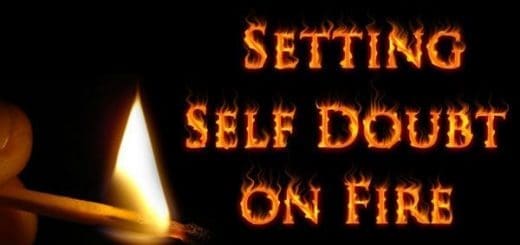Epeolatry Book Review: Alfred Hitchcock Storyboards by Tony Lee Moral

Disclosure:
Our reviews may contain affiliate links. If you purchase something through the links in this article we may receive a small commission or referral fee. This happens without any additional cost to you.

Title: Alfred Hitchcock Storyboards
Author: Tony Lee Moral
Genre: Individual Directors, Art of Film & Video, Pop Culture Art
Publisher: Titan Books
Release Date: 6th February, 2024
Synopsis: A one-of-a-kind historical document and celebration of the artwork behind several of the Master of Suspense’s greatest films.
This stunning coffee table book focuses on the storyboards for nine of Alfred Hitchcock’s classic movies – Vertigo, The Birds, Psycho, North by Northwest, The 39 Steps, Torn Curtain, Marnie, Shadow of a Doubt and Spellbound. It includes never before-published images and incisive text putting the material in context and examining the role the pieces played in some of the most unforgettable scenes in cinema. Hitchcock author and aficionado Tony Lee Moral takes you through the last 100 years of cinema, with the Master of Suspense as your guide.
As someone of a certain age, I grew up watching many a black-and-white film, plus those of the 70s technicolour. Those films, though I did not appreciate it at the time, were the classics of movie history. And that period was also when Hitchcock’s films would find their way onto our TV screen – we had no streaming, only 3 TV channels, no video recorder (until I was 17!). Certain his movies would be regularly repeated on a Saturday or Sunday afternoon, these tended to be the likes of The 39 Steps, Vertigo, North by Northwest, Rebecca, and Rear Window. Others would be shown late at night, for example The Birds and Psycho. And what I remember above all else about these films was the sheer brilliance of storytelling, something which Hitchcock himself reinforces in this book.
How did Hitchcock become such a master storyteller? The answer lies in this book, in his background as an artist which allowed him to develop a story in the most detailed visual manner possible via his storyboards and the storyboards of those who worked with him. “Making a film means, first of all, to tell a story. That story can be an improbable one, but it should never be banal. It must be dramatic and human. What is drama after all, but life with the dull bits cut out?” And for me, whilst the book is about his films, primarily it is about art and about its overwhelming influence on him and his preproduction team. The extent of this was a real eye-opener.
Hitchcock’s early days saw him taking night classes in life drawing and eventually getting a job in the film industry in the art department of the Players-Lasky Corporation. Those he worked with as his career progressed included graduates of art and architecture: Dorothea Holt, Oscar Werndorff, Mentor Huebner Henry Bumstead, Harold Michelson, Robert Boyle, Saul Bass, Joseph Musso, and Hein Heckroth. Their biographies are included and they are given clear credit within the pages adorned with many examples of their work. From very simple sketches, there are gorgeous watercolours or charcoal and graphite frames. The mattes painted to provide background images are equally exquisite. Even Salvador Dali joined Hitchcock’s team for a while, designing the dream sequence for Spellbound. The depth of talent employed during this period of the movie industry is remarkable.
Within the storyboard frames was everything required for a particular shot, from light and shadow, perspective and camera angles, to props and costume. Details gathered by the artist in consultation with Hitchcock and other members of his team show how much of a team effort this production aspect truly was. With his storyboards in place, he was able to visualise a movie before the first frame was filmed, everything sequenced to build up dramatic tension. The book includes some of the most memorable moments of cinematic history resulting from this attention to detail.
We all remember Cary Grant running from the crop duster in North by Northwest and you get to relive it utterly in its storyboard sequence where the images ooze tension. Another ‘etched on the memory’ moment is the shower sequence in Psycho, a masterpiece. As Hitchcock said, “The knife never touched the body at all. It was just fast cutting from one shot to another.” Each shot has its own storyboard so you get to see how he cut the scene. Do we need another example of the memorable? How about The Birds when the crows attacked the school house? Board after board builds up the drama of the flock gathering behind the character, Melanie, until she turns and realises the danger.
They say every picture tells a story and the storyboards created by Hitchcock and his team most certainly do. This book is an absolute treat for movie and art lover alike. It left me wanting to watch all those films again, applying my newly acquired ‘inside’ knowledge to see just how he did it.
![]() /5
/5
- About the Author
- Latest Posts
Stephanie Ellis writes dark speculative prose and poetry and has been published in a variety of magazines and anthologies. Her longer work includes the folk horror novels, The Five Turns of the Wheel, Reborn, and The Woodcutter, and the post-apocalyptic/horror/sci-fi The Barricade, and the novellas, Bottled and Paused. Her dark poetry has been published in her collections Lilith Rising (co-authored with Shane Douglas Keene), Foundlings (co-authored with Cindy O’Quinn) and Metallurgy, as well as the HWA Poetry Showcase Volumes VI, VII, VIII, and IX and Black Spot Books Under Her Skin. She can be found supporting indie authors at HorrorTree.com via the weekly Indie Bookshelf Releases. She can be found at https://stephanieellis.org and on Blue Sky as stephellis.bsky.social.













